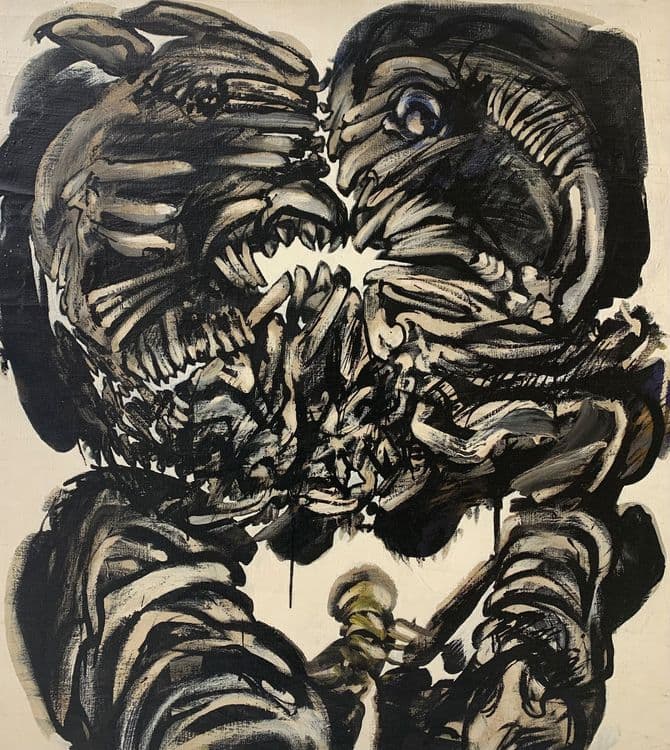
Uğur Güler
Eskişehir b. 1988

Eskişehir b. 1988
Uğur Güler(b.1988, Eskişehir) graduated from the Painting Department of Anadolu University Faculty of Fine Arts.
Academic education at one side, he started to turn towards the topics of the human body, body parts, blood, and bodily fluids, and he depicted these with paintings made up of fragmented portraits. After he presented these paintings in various exhibitions, photographic discourse started to become prominent in the artist’s paintings with the start of the year 2011. In line with the topic he took off, he designed costumes and make-ups and then applied these to models in a performative way, formed them into photography-video, and after that, transferred them to the canvas with paint.

Summart is inaugurating its new exhibition hall with a selection of Uğur Güler’s works from 2010-2015.
SEE MORE

Uğur Güler’s exhibition, "New Rotten Times," challenges established norms around sexuality, religion, state, family, and individuality. Through provocative works, Güler explores taboos and symbols, from the controversial portrayal of gender and sexuality to historical figures like Elagabalus and Jesus, confronting the viewer with society’s hypocrisies and pressures. His "Happy Family" series critiques family-imposed cultural codes, while "Memory of Trauma" reflects the cyclical impact of abuse. With "Flesh in Outer Space," Güler examines the human body as an anonymous, fragmented entity, highlighting shared human vulnerability. Blending modernist and contemporary styles, he invites audiences to question and break free from entrenched cultural paradigms.
SEE MORE

"Aporia" is a term deeply rooted in the conceptual and intellectual foundations of Ancient Greek philosophy. It denotes a challenging intellectual dilemma arising from the intrinsic contradictions or conflicts within a concept or object, representing paradoxes and unresolved antitheses within thought itself. This concept has often served as a tool for thinkers attempting to understand the complex and conflicting nature of the human mind.
SEE MORE

This exhibition focuses on speculative realities that are deemed unreal because we do not experience them in the "here and now," positioned on the boundary between what is real and what is not. Although the works have different facets, they attempt to gather pieces that can relate to each other under one umbrella, in relation to the changes in the perception of given reality. This reality is based on assumptions that what is considered “real” can be reembodied. Gerçekte Olmayan Şeylerin Zihinsel Tahayyülleri is an extension of thought processes that lead to different possibilities, such as post-humanism and new materialism, which emerged in the 21st century following the human-centered thinking of humanism and the unwavering faith in human reason of the Enlightenment.
SEE MORE

“Affirmative World” which consists forty-two works from eighteen artists, by redefining ethical protocols, norms and the world of values this exhibition roams among different paths of criticizing and pursuit of solutions with reference to philosopher Rosi Braidotti’s Affirmative Ethics and Affirmative Politics concepts. When human consciousness and thought imageries pass through a beyond-human atmosphere they leave destructive acts and this exhibition renders them into timeless, empty stains that can be seen on white space. Exhibition, tries to get rid of the negativity of subjectivity that was shaped through language, history and discourse and then questions the possibility of strengthening different ways of connecting it to an affirmative otherness and the possibility of converting it into an energy of life. Exhibition, which is composed of artists whose approach to plastic is the opposite of each other, by feeding on the negativity of critical thought and by considering this negativity as an opportunity to create a new society, gives this negativity a carnivalesque feeling.
SEE MORE